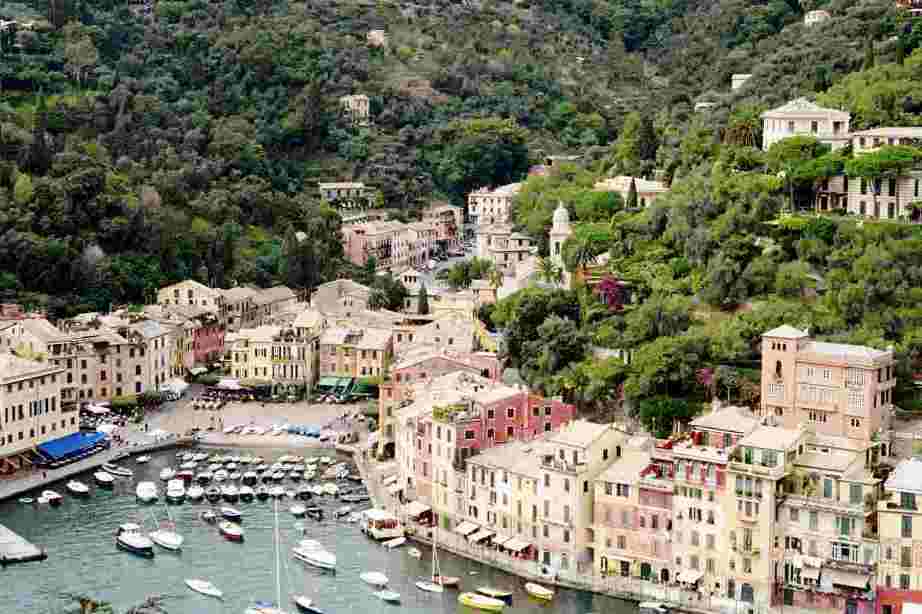
Today it's different. I'm taking the public bus for the short ride to Portofino from Santa Margherita Ligure. Along the way, the driver honks the horn just before a blind curve and he repeats this at every bend to warn oncoming cars of our approach. It's important he sounds the horn often on these hairpin turns so drivers can stick to their side of this pencil-thin road.
After the bus deposits us behind the Piazzetta, I walk to the dock to get a good view of the village neatly tucked in a sheltered cove. It is as I remember it. Waterfront cafes and restaurants, boats bobbing in the harbor, brightly painted houses, the yellow church of San Marino and the forested hills at its back door. I find Portofino as attractive as ever.
The hike to Brown Castle above the wharf is a good workout for the leg muscles. On the way up I peer through iron fences to get a glimpse of private gardens and admire the different flora. Mr. Yeats Brown, a British consul and former owner of the castle, planted two cypress trees on his property, one for him and the other for his wife. It reminds me of the Lone Cypress at Pebble Beach. Inside the castle is an exhibit of photographs of celebrities who have visited the Italian Riviera towns, ushering the influx of tourists to the area.
From the garden there are great views of the village awash in color. It can easily use up a roll of film or a memory stick. Halfway downhill is the Church of San Giorgio. It opens onto a small square overlooking the Gulf of Tigullio. It's possible to hike all the way to San Fruttuoso to see its famous Benedictine abbey along a coastal trail or across Monte Portofio which soars to 611 meters (2004.5 ft.).
Returning to the harbor, I pass a sculpture garden by the side of the hill. It is visible from the marina and complements its natural surroundings. I wander down narrow alleys and stop to inspect some striking watercolor canvasses and antique Russian icons that are drawing interested buyers. On the waterfront are chic stores which appear to be recent additions.
Portofino has been attracting the yachting crowd since the early days. Then the smaller cruise ships dropped anchor a few miles offshore. I remember the guests who sat at the cafes clad in white slacks and shirts that barely concealed golden tans and looking very much like Hollywood types behind those dark sunglasses. Dinner alfresco with soft candlelight filled the night air with romance. This was and still is the appeal of Portofino, so tiny you can walk around the village and comb the hills in an hour or two.
Some critics say that Portofino has sold out. It's no longer a fishing village but an elegant haven for the privileged. If selling out means clean public restrooms, freshly painted houses, litter-free streets and name boutiques instead of tacky souvenir shops, then yes, Portofino has sold out. Bur there is no overdevelopment. The natural remains unspoiled. The village retains a relaxed ambience and the locals are friendly.
The thoughtful conveniences offered by Portofino add to a memorable travel experience. It is the equivalent of saying Benvenuto (Welcome).
* * *
Getting there: There are buses from Santa Margherita Ligure to Portofino with pick-up stops at the train station and at the center of Santa Margherita. It is 20-minute ride and costs one euro.


